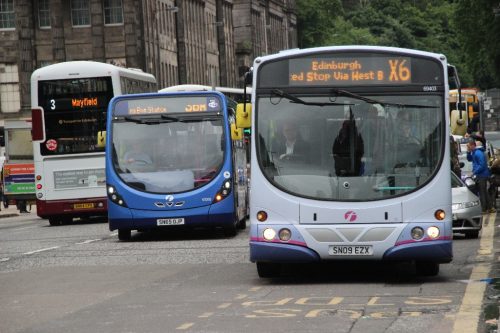
National Statistics released by Transport Scotland have shown a general decline in the country’s bus industry.
The figures revealed that 409 million bus journeys were made in the 2015/16 period in Scotland, just over a third of which were under the National Concessionary Travel Scheme. This represents a 2% fall in patronage compared to the previous year, and a 16% fall from a peak in 2007/08.
Over the last five years, passenger journeys and vehicle mileage have fallen by 5%, bus fleet sizes have declined by 11% and staff employed has fallen by 1%. Over the same period, fares had risen by 19%-6% in real terms. Patronage has declined at a sharper rate than in Great Britain as a whole, where the decline was 3% over the same period.
Bus operators received £671m in revenue, up 2% on the previous year and representing an 8% increase over the last five years. When adjusted for inflation, the passenger revenue figures are constant. Almost half of operator revenue came from concessionary travel reimbursement, BSOG or supported services, not including investment funds like the Scottish Green Bus Fund. In real terms, the funding is 5% lower than five years ago.
Operating costs per vehicle kilometre have risen 7% in real terms over the past five years. Costs per journey have risen 15%, from £1.27 to £1.46.
Transform Scotland Director, Colin Howden, said: “Buses play an important role in reducing congestion in urban areas and providing services to lower-income groups who often don’t have access to cars.
“It’s deeply disappointing that the Scottish government continues to cut investment in bus services.
“The government should instead be taking action to cut congestion by putting in place bus priority in urban areas, and protecting threatened rural bus services.”
A Transport Scotland spokeswoman commented: “We are concerned about the decline in bus patronage, something which has been continuing since at least the 1960s, well before deregulation began in the mid-1980s.”

